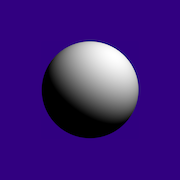|
I'm excited. This this should be cool as hell. The past few days I was watching a live model of the deployment stages in real time. It showed how far away from Earth/It's destination it was and had small videos of how the deployments worked. I closed the window and can't find it again though. 
|
|
|
|

|
| # ? May 2, 2024 13:42 |
|
Was it this? Where is Webb?
|
|
|
|
vortmax posted:Was it this? That's it! Thank you! edit: wait, is this thing being set up WAY beyond the distance of the moon? I haven't read too much into it. Just stuff about the launch. Pennywise the Frown fucked around with this message at 20:02 on Jan 8, 2022 |
|
|
|
will this thing be able to take pictures of elon's car? i don't care about him, but it's kind of cool that there's a car orbiting the sun. i want to see pictures of it
|
|
|
|
What are they pointing it at first? Surely they've got a list of top 3 things to have a look at straight away.
|
|
|
|
Pennywise the Frown posted:edit: wait, is this thing being set up WAY beyond the distance of the moon? I haven't read too much into it. Just stuff about the launch. Yup. They can't put the thing in earth's orbit like the Hubble because even the earth radiates too much heat for it to work. So like you'd need the giant sun-shield and also a giant "earth-shield", and that's just too complicated. There's this cool thing called a Lagrange Point, where the gravity of the earth and sun balance up and you can have a thing "stay put" relative to the earth. It's way out there. Normally if an object was orbiting the Sun an extra 1.5 million KM further out than the earth, it wouldn't have the same orbit time as the earth. We'd go around the sun in 1 year, and the other thing would take like 1 year and 5 days. (Mars is 50% further out from the sun than Earth an it has a 686 day orbit.) That would mean that it would get out of sync with Earth and we'd drift further and further apart. But the Lagrange Point allows it to follow Earth's 1 year orbit so we stay together. Chris Pistols posted:What are they pointing it at first? Surely they've got a list of top 3 things to have a look at straight away. just a guess but I'd imagine the first few things will be "boring" well-observed objects that we already have lots of data on -- to calibrate it and make sure the instruments do what they expect Klyith fucked around with this message at 20:24 on Jan 8, 2022 |
|
|
|
Happy to hear it's working out. I watched one of NASA's live streams (there are many!) the other day during mirror deployments and it was very tense. Nothing went wrong, I just like to stress myself out. All this stuff is so precarious. https://twitter.com/NASAPersevere/status/1479611931510013952?s=20
|
|
|
Demon Of The Fall posted:https://twitter.com/NASAWebb/status/1476194840018890756?s=20 
|
|
|
|
|
Klyith posted:Yup. They can't put the thing in earth's orbit like the Hubble because even the earth radiates too much heat for it to work. So like you'd need the giant sun-shield and also a giant "earth-shield", and that's just too complicated. That's loving awesome.
|
|
|
|
anyone got good article comparing the webbs capabilities to hubble? sorry if its been posted before but i have pink eye in both eyes and its really hard to read the text.
|
|
|
|
Will Webb be looking at extrasolar planets or just cosmology type stuff, ie quasars and big bang remnants?
|
|
|
|
Ramrod Hotshot posted:Will Webb be looking at extrasolar planets or just cosmology type stuff, ie quasars and big bang remnants? yeah it will do extrasolar planet stuff it's got a really neat spectrograph that will be able to tell the composition of planet's atmospheres (for those planets that pass in front of their parent star and eclipse it) and one of the more exciting things is that it will be good at seeing through dust, so I think they'll be looking at stars that still have dust discs where maybe planets are still forming. that's a cool one because "how is babby planet formed" is still a topic with lots of questions. edit: But the cosmology & deep time stuff is the primary mission, and the thing that only JWST can do. We needed a bigass telescope, bigger than hubble, to see that far. And it had to be a space telescope to see that deep in infrared. Thus JWST. So the future "menu" will depend a lot on what they see the first year or two. Maybe the universe 14 billion years was super uniform, and after looking for a while they'll be like, huh guess we can stop taking pictures of ancient galaxies that are all pretty much the same. OTOH maybe they keep finding new stuff about the shortly-post-big-bang universe and JWST ends up doing mostly that for its whole life. Klyith fucked around with this message at 01:33 on Jan 9, 2022 |
|
|
|
https://twitter.com/NASAWebb/status/1479880178021060609?s=20 It really is a scientific marvel what they were able to pull off with this thing
|
|
|
|

|
|
|
|
Now we wait two more weeks for it to reach orbit around Earth-Sun L2. Even the first test images are going to be stunning 
|
|
|
|
guess who just took their first selfie
|
|
|
|
PIZZA.BAT posted:guess who just took their first selfie 
|
|
|
|
very hexy
|
|
|
|
gonna nut when the first fully calibrated pictures drop.
|
|
|
|
this is a video about the sensors and whatnot https://www.youtube.com/watch?v=MzWfUK0yvdY
|
|
|
|
I wish they could take a better selfie than my 2000s webcam.
|
|
|
|
Pennywise the Frown posted:I wish they could take a better selfie than my 2000s webcam. Let's see you take a better selfie at Earth's L2.
|
|
|
|
Vincent Van Goatse posted:Let's see you take a better selfie at Earth's L2. I'll do it and do it with my cellphone and no space "uniform."
|
|
|
|
PIZZA.BAT posted:guess who just took their first selfie
|
|
|
|
This is a good representation of what the orbit looks like: https://twitter.com/NASASun/status/1493294029500518408?s=20&t=RSQ2HlyYPfmp8eWk96qtOQ
|
|
|
|
SAY YOHO posted:This is a good representation of what the orbit looks like: Why does it orbit "vertically" while orbiting with Earth "horizontally"? I'm very stupid, hope that made sense
|
|
|
|
kazr posted:Why does it orbit "vertically" while orbiting with Earth "horizontally"? Don't worry, I am in the same boat. I don't know why so far I've just accepted it.
|
|
|
|
Not sure I am also dumb, my best understanding is that, in the rubber sheet analogy, the Lagrange points are relatively flat areas in the two body problem, meaning you don't have to use a lot of fuel to stay there. The halo orbit looks like a pendulum effect, from the earth. It is probably cheaper fuel/weight-wise, to change course tangentially to the earth, than to try to park it at a point.
SAY YOHO fucked around with this message at 07:02 on Feb 15, 2022 |
|
|
|
kazr posted:Why does it orbit "vertically" while orbiting with Earth "horizontally"? It has to do with keeping it out of the Earth/Moon shadows: Webb at L2 (~half way down the page). At first I thought it was to help equalize out the gravitational forces.
|
|
|
|
SAY YOHO posted:Not sure I am also dumb, my best understanding is that, in the rubber sheet analogy, the Lagrange points are relatively flat areas in the two body problem, meaning you don't have to use a lot of fuel to stay there. This is how they're described in pretty much every scifi novel, especially the ones where the FTL drive only works in those spots. It's not the worst handwave description for them, but it's not true. Reality is both more complicated and much more mundane. Lagrange points aren't flat areas of gravity. If the "rubber sheet" was flat that would mean no gravity at all, and stuff would just fly away. If I could use a device on you that flattened gravity, you'd be flung off the earth. That's not what happens to stuff at Lagrange points. Two basic principles of orbital mechanics: 1. The lower / tighter your orbit, the faster you move. The ISS is in low earth orbit, 420km above us. It's moving 7.66 kilometers per second and goes around the Earth once every 90 minutes. The Moon is about 380,000 km up. It moves at just over 1km/second and takes 28 days to do an orbit. Higher orbit = slower. 2. The bigger (more massive) the thing you're orbiting, the faster your orbit velocity. The Earth is orbiting the Sun at almost 30km/s, despite the fact that we're a long way from the Sun. That's because the Sun is stonkin' huge. The Parker Solar Probe is the fastest object built by man -- it dives so close to the Sun that it enters the outer layers of the solar corona. It goes over 190km/second at its fastest. So, the JWST is in orbit around the Sun, just like Earth. But it's 1.5 million km further out. This means that by principle #1, it should be going slower than the Earth, and taking longer to orbit. If that were the case it would start "falling behind", getting further and further away. That would be annoying, it would need bigger radios to communicate. And eventually it would be 180° out of sync, on the opposite side of the Sun to us. You can't radio through the Sun, so we'd be out of contact for a while. Then we'd start "catching up" and getting closer. But now you want to think about fact #2. The Lagrange point L2 is on the line from the Sun through the Earth. Along that line you are adding the Earth's gravity to the Sun's. In effect, it's as if the Sun is a little bit heavier. The specific L2 point along that line is where that Earth+Sun equals an orbit velocity that's the same as Earth. tl;dr the Earth has JWST on a string and is pulling it along saying "keep up, don't fall behind!"
|
|
|
|
Chris Pistols posted:What are they pointing it at first? Surely they've got a list of top 3 things to have a look at straight away. Just got off the phone with NASA and they're finally going to capture the whole girth of my dillz.
|
|
|
|
SAY YOHO posted:This is a good representation of what the orbit looks like: I'm sure there are several smart reasons for orbiting this way but you can't convince me it's mostly about scientists just showing off their insane math skills. This is the 360 noscope of orbital patterns
|
|
|
|
sigher posted:Just got off the phone with NASA and they're finally going to capture the whole girth of my dillz. Oh are they also building microscopes now? Cool!
|
|
|
|
Klyith posted:the Earth has JWST on a string and is pulling it along saying "keep up, don't fall behind!" Webb wobbles, but won't fall down.
|
|
|
sigher posted:Just got off the phone with NASA and they're finally going to capture the whole girth of my dillz. You're gonna need a whole bunch of lenses for that because electron microscopes aren't powerful enough
|
|
|
|
|
Klyith posted:This is how they're described in pretty much every scifi novel, especially the ones where the FTL drive only works in those spots. It's not the worst handwave description for them, but it's not true. Reality is both more complicated and much more mundane. Thanks for explaining. drat that's cool
|
|
|
|
PIZZA.BAT posted:guess who just took their first selfie Mozi posted:very hexy
|
|
|
|
not even my bathroom mirror is that dirty
|
|
|
|
Klyith posted:This is how they're described in pretty much every scifi novel, especially the ones where the FTL drive only works in those spots. It's not the worst handwave description for them, but it's not true. Reality is both more complicated and much more mundane. I can imagine the string thing a bit, with Sun's plus a tiny bit more gravity, which is the the Earth. Does the James Webb go up and down in a circle because of constant corrections, or does it mostly naturally do that? I can kinda see it being able to orbit vertically like that because it's the Sun's gravity pulling it in one direction, and then the Earth's gravity pulling it in another direction.
|
|
|
|

|
| # ? May 2, 2024 13:42 |
|
From what I've heard, the Webb is orbiting juuuuust outside of the actual L2 distance, and naturally wants to float slowly away from Earth. They're applying a tiny bit of thrust to hold it on the edge of the "slope." So it's sorta like a ball rolling around the edge of a shallow hill, with barely enough inward thrust to keep it from rolling away.
|
|
|





































